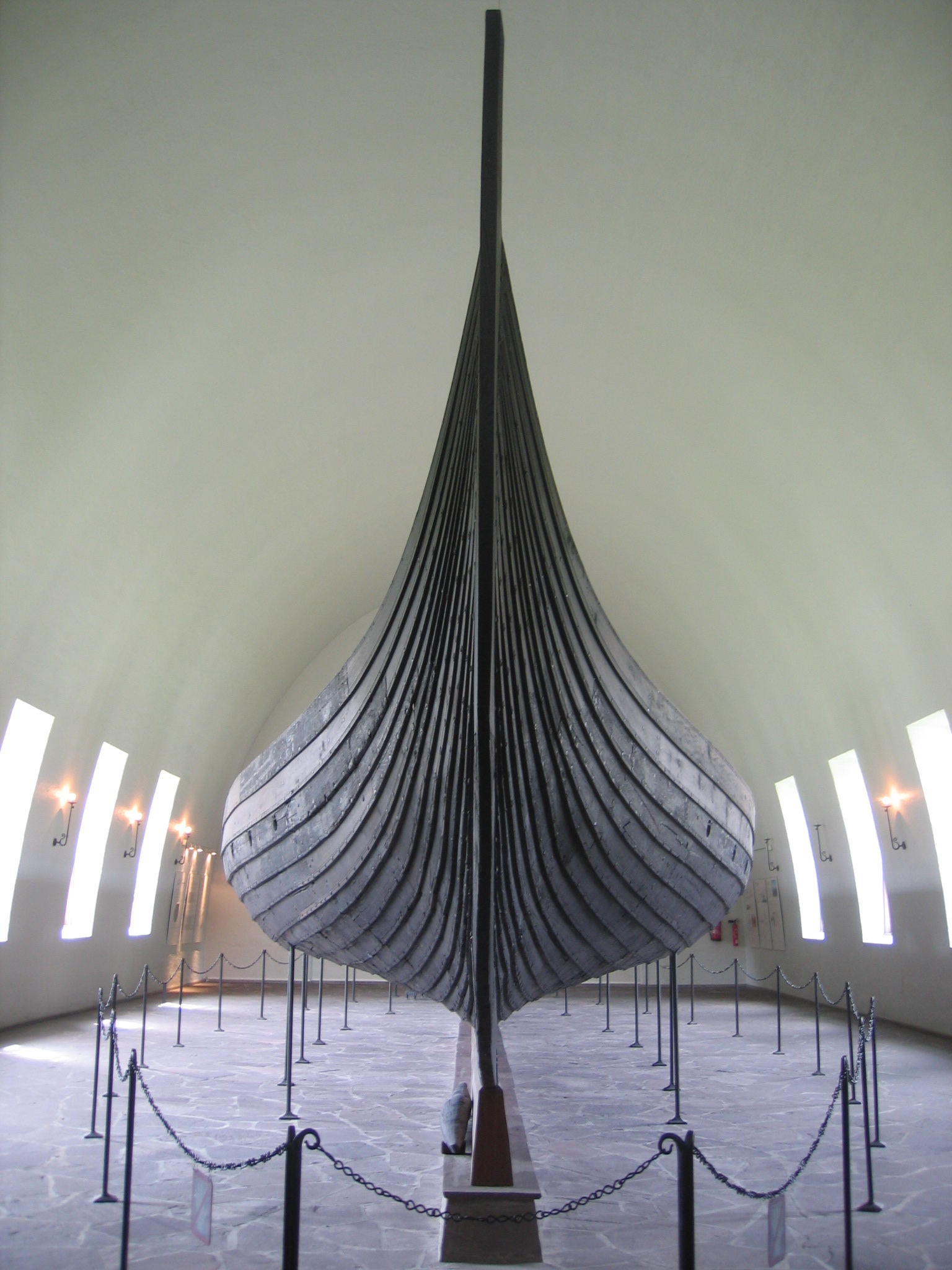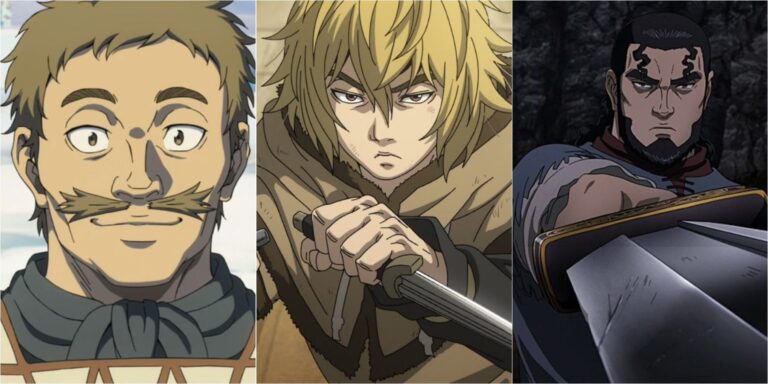When diving into the captivating world of historical anime, one series that often sparks curiosity is Vinland Saga. The question that frequently arises is, “Is Vinland Saga based on real events?” This anime, known for its rich storytelling and intricate characters, intricately weaves historical elements with fiction, blurring the lines between reality and imagination. Set during the Viking Age, Vinland Saga explores the adventures of legendary figures such as Thorfinn Karlsefni and explores Norse exploration beyond their homelands. As we seek to unveil the truth behind this enthralling series, join us on a journey to uncover the historical inspirations that fuel the epic tale of Vinland Saga.
Introduction: Exploring the Historical Context of Vinland Saga
Vinland Saga, an epic anime and manga series created by Makoto Yukimura, has garnered widespread attention for its gripping narrative and historical accuracy. The story revolves around the Viking Age and follows the protagonist, Thorfinn, on a quest for vengeance and self-discovery. But the question that often arises among fans and historians alike is, “Is Vinland Saga based on real events?”
The Saga of Vinland
Set in the early 11th century, Vinland Saga delves into the turbulent period of Viking exploration and conquest. The series draws inspiration from historical accounts, notably the sagas of Icelandic explorers like Leif Erikson who is believed to have discovered Vinland, present-day North America, around the year 1000.
The portrayal of Norse culture, their seafaring prowess, and encounters with indigenous peoples in the New World recreates a vivid depiction of the era, captivating audiences with its blend of fiction and historical events.
Unraveling the Mystery
While Vinland Saga weaves a captivating tale, it is important to recognize that the series takes artistic liberties in portraying historical events. The creative interpretation adds depth and intrigue to the narrative, prompting viewers to delve deeper into the historical context.
As fans speculate on the parallels between fiction and reality, the essence of Vinland Saga lies in immersing the audience in a bygone era of exploration, conflict, and discovery.

Origin of Vinland Saga: Unraveling the Inspiration Behind the Series
When exploring the origins of Vinland Saga, one cannot ignore the intriguing blend of historical truths and fictional narratives that form the basis of this popular manga series. Created by Makoto Yukimura, Vinland Saga delves into the medieval history of Scandinavia, particularly focusing on the Viking expeditions to North America.
The Real Events: Separating Fact from Fiction
Vinland Saga is known for its meticulous attention to historical detail, offering readers a glimpse into the Viking Age with a significant level of accuracy. Although the series incorporates fictional elements and characters, the core storyline is inspired by real events such as Leif Erikson’s exploration of Vinland (present-day Newfoundland) around the year 1000 AD.
While the overarching narrative may be fictionalized for dramatic effect, the historical backdrop of Vinland Saga remains rooted in genuine historical accounts, making it a captivating blend of reality and imagination.
Inspiration Behind the Saga
The inspiration for Vinland Saga can be traced back to the medieval Icelandic sagas that recount the adventures of legendary figures like Thorfinn Karlsefni and Erik the Red. By drawing from these historical sources, Yukimura weaves a narrative that not only entertains but also educates readers about the challenges and triumphs of the Viking era.
Historical Accuracy: Analyzing the Depiction of Real Events in Vinland Saga
While Vinland Saga is a historical anime/manga series, it is important to discern between the fiction of the storyline and the factual events it portrays. The LSI keywords “is Vinland Saga based on real events” have sparked debates among fans and historians alike regarding the historical accuracy of the series.
Exploring the Historical Context
Set in the early 11th century, Vinland Saga intricately weaves historical figures such as Leif Erikson and Thorfinn Karlsefni into its narrative, offering a glimpse into the Scandinavian exploration of North America. The series delves into the conflict between the Vikings and the native people of Vinland, shedding light on the harsh realities of that era.
Real Events vs. Fictional Interpretation
While Vinland Saga incorporates real historical events and characters, it also takes creative liberties to enhance the storytelling. The alternate retelling of historical events in the series adds a layer of intrigue for viewers, blending reality with imagination.
- Authentic Settings: The meticulous attention to detail in recreating historical settings such as medieval Europe and Vinland lends credibility to the depiction of real events.
- Character Adaptations: Characters like Thorfinn are portrayed with depth, exploring their personal motivations against the backdrop of historical events.
Comparing Fiction and Reality: What Sets Vinland Saga Apart
When delving into the intricacies of Vinland Saga, one of the most captivating aspects is the juxtaposition between fiction and reality. This anime series, based on the historical background of Vikings, intertwines fictional narratives with real events, creating a unique viewing experience for audiences.
The Historical Accuracy of Vinland Saga
One of the key distinguishing factors of Vinland Saga is its commitment to historical accuracy, despite being a work of fiction. The series draws heavily from real events, such as the Viking raids on England and the exploration of new lands, grounding its storytelling in a strong historical foundation.
Additionally, characters like Thorfinn experience personal growth and challenges that resonate with the human experience, adding depth to the storytelling.
The Fictional Elements and Creative Liberties
While Vinland Saga stays true to many historical facts, it also incorporates fictional elements and creative liberties to enhance the narrative and keep viewers engaged. The inclusion of mythical elements and dramatic storylines adds a layer of intrigue to the series, blurring the lines between fiction and reality.
- By introducing original characters and fictional subplots, the creators of Vinland Saga have successfully woven together historical accuracy with imaginative storytelling.
- The use of symbolism and metaphors further enrich the overall viewing experience, providing audiences with thought-provoking themes and messages.
Debunking Myths: Separating Fact from Fiction in Vinland Saga
Vinland Saga, the popular anime and manga series, is a captivating tale of Norse history, exploration, and warfare. However, many fans wonder, is Vinland Saga based on real events? Let’s delve into the facts and separate them from the fiction.
Historical Inspiration
The creator of Vinland Saga, Makoto Yukimura, drew inspiration from historical events such as the Viking exploration of North America led by Leif Eriksson around the year 1000. While the series incorporates elements of real history, it also takes creative liberties to craft a compelling narrative.
One key aspect that blurs the line between fact and fiction is the portrayal of characters and their interactions, adding depth and drama to the storyline.
Geographical Accuracy
While Vinland Saga captures the essence of Viking exploration and conquest, some geographical aspects may not align perfectly with historical records. The depiction of landscapes and locations in the series may be embellished for a cinematic effect, blending reality with artistic interpretation.
To enhance the viewer’s experience, the animation and artistic style of Vinland Saga recreate the Viking era with stunning visuals, bringing the world of Norse mythology to life in a unique way.
Frequently Asked Questions
-
- Is Vinland Saga a historical anime?
- Vinland Saga is a historical manga series that is based on real events and historical figures.
-
- What is the inspiration behind Vinland Saga?
- Vinland Saga is inspired by historical events, notably the Viking explorations and tales of the Norse people.
-
- Is the character of Thorfinn based on a real person?
- While Thorfinn is a fictional character, he is inspired by the historical figure Thorfinn Karlsefni, who was an Icelandic explorer.
-
- Are the depictions of battles and warfare in Vinland Saga accurate?
- The series strives to depict battles and warfare as realistically as possible based on historical accounts and research.
-
- How much of Vinland Saga is based on actual history?
- While Vinland Saga is a work of fiction, it incorporates many real historical events, locations, and figures into its narrative.
In Summary: Unveiling the Verdict on Vinland Saga’s Authenticity
After a deep dive into the historical roots of Vinland Saga, the verdict is in – while the manga and anime draw inspiration from historical events and figures like Leif Erikson and the Vikings’ exploration of North America, it is ultimately a work of fiction. The author, Makoto Yukimura, masterfully weaves together real elements with his imaginative storytelling to create a captivating narrative that entertains and educates viewers.
Exploring themes of ambition, revenge, and discovery in a medieval setting, Vinland Saga provides a rich tapestry of emotions and intricate character development that resonates with audiences worldwide. Whether you are a history buff or simply a lover of epic tales, Vinland Saga’s blend of reality and fantasy offers a unique viewing experience that leaves a lasting impact.
So, while Vinland Saga is not based on specific real events per se, its essence captures the spirit of the Viking Age and human perseverance, making it a compelling and unforgettable story for generations to come.



